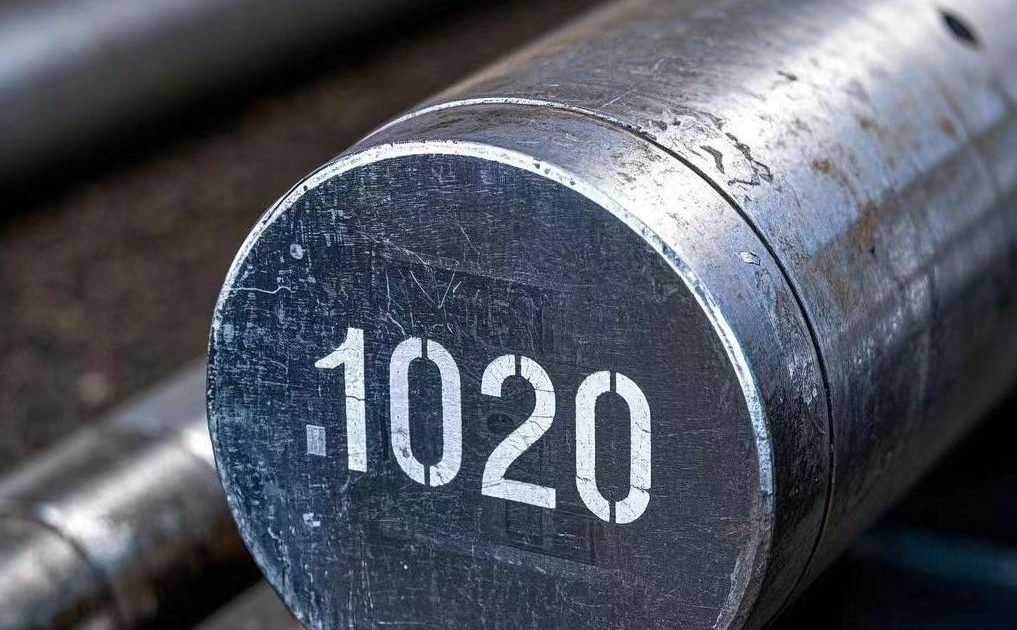How To Manufacture High Quality 1020 Forged Round Steel?
Manufacturing high-quality 1020 forged round steel requires strict control of raw materials, forging process, heat treatment and testing process. The following are key steps and technical points:
1. Raw Material Selection & Pretreatment
- Raw material requirements:
– Use 1020 steel billets or ingots that meet ASTM A29/A29M standards.
– Chemical composition: carbon (0.18%~0.23%), manganese (0.30%~0.60%), sulfur and phosphorus content ≤0.04%.
– Raw materials must be free of defects such as cracks, pores, inclusions, etc. - Smelting process:
– Use electric furnace (EAF) or converter (BOF) smelting, with LF (ladle refining) furnace desulfurization and impurity removal.
– Continuous casting or die casting into steel billets to ensure dense and uniform structure.
2. Forging Process Control
(1) Heating stage
- Heating temperature: The billet is heated to **1150~1200°C** (initial forging temperature) to ensure plastic deformation ability.
- Homogenization: The holding time is calculated according to the billet diameter (about 1.5 minutes/mm) to avoid cracking caused by internal and external temperature difference.
- Oxidation control: Use a protective atmosphere heating furnace or rapid heating to reduce the formation of oxide scale.
(2) Forging process
- Forging method:
– Free forging: Suitable for small batches or large-sized round steel, formed by operations such as upsetting and drawing.
– Die forging: Suitable for mass production, high precision, but high die cost. - Deformation control:
– Forging ratio (deformation) ≥3:1, refine grains and eliminate casting defects.
– Multi-pass forging to avoid internal cracks caused by excessive single deformation. - Final forging temperature: ≥800°C to prevent residual stress caused by low-temperature forging.
(3) Cooling after forging
- Cooling methods:
– Air cooling: suitable for round steel with small cross-section, simple and economical.
– Pile cooling or pit cooling: round steel with large cross-section needs to be cooled slowly to prevent white spots (hydrogen embrittlement) and cracks. - Post-cooling treatment: cleaning oxide scale (sandblasting or pickling).
3. Heat Treatment Process
- Normalizing treatment (grain refinement):
-Heat to 880~920°C, keep warm for 1~2 hours (calculated by diameter), and air cool.
-Target: uniform structure (ferrite + pearlite), hardness ≤150 HB. - Annealing treatment (stress relief):
-Heat to 650~700°C, keep warm and cool to below 300°C before being taken out of the furnace.
-Suitable for round steel that requires subsequent cold processing.
4. Surface & Dimensional Processing
- Surface treatment:
– Turning or grinding: remove oxide layer and surface defects to achieve a finish of Ra≤3.2 μm.
– Shot peening: improve surface fatigue strength. - Dimension control:
– Round steel diameter tolerance according to standard (such as 0/+5mm), straightness ≤3mm/m.
– End face is straight, without burrs or warping.
5. Quality Inspection & Verification
- Chemical composition analysis: Spectrometer (OES) detects elements such as C, Mn, S, and P.
- Mechanical properties test:
– Tensile test: tensile strength ≥420 MPa, elongation ≥15%.
– Hardness test: Brinell hardness (HB) 130~150. - Nondestructive testing:
– Ultrasonic testing (UT): detect internal cracks and pores.
– Magnetic particle testing (MT): check surface and near-surface defects. - Metallographic analysis:
– Grain size rating (ASTM E112): target 7~8 (fine and uniform).
– No banded structure or abnormal inclusions (such as Al₂O₃, MnS).
6. Common Problems & Solutions
| Problems | Causes | Solutions |
| Surface cracks | Forging temperature is too low or cooling is too fast | Control the final forging temperature ≥800°C and cool slowly |
| Internal pores | Original defects of billet or insufficient forging ratio | Increase forging ratio (≥3:1), strict raw material inspection |
| Coarse grains | Normalizing temperature is too high or insulation is insufficient | Adjust normalizing process (temperature 880~920°C) |
| Uneven hardness | Uneven heat treatment furnace temperature | Optimize furnace atmosphere circulation and increase thermocouple monitoring points |
| Dimensional deviation | Die wear or operation error | Regularly inspect the die and use CNC forging equipment |
Summary:
Core Control Points of High-quality 1020 Forged Round Steel
1. Pure raw materials: low sulfur and phosphorus, defect-free steel billets.
2. Reasonable forging process: precise control of temperature, deformation, and cooling rate.
3. Strict heat treatment: normalizing to refine grains, annealing to eliminate stress.
4. Full process testing: chemical composition, mechanical properties, and non-destructive testing are indispensable.
Through the above process optimization and strict quality control, high-reliability 1020 forged round steel suitable for machinery, automobiles, tool manufacturing and other fields can be produced.



